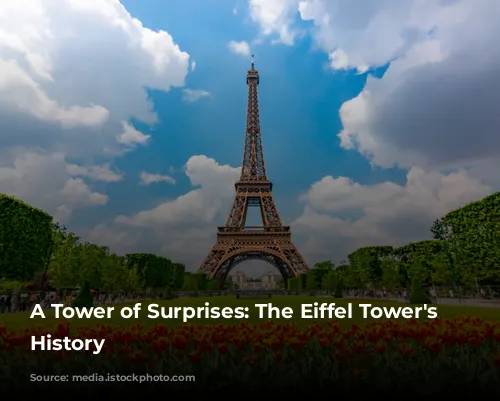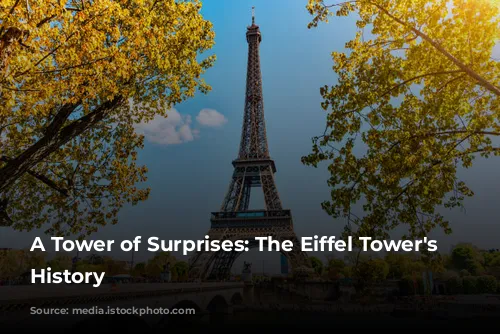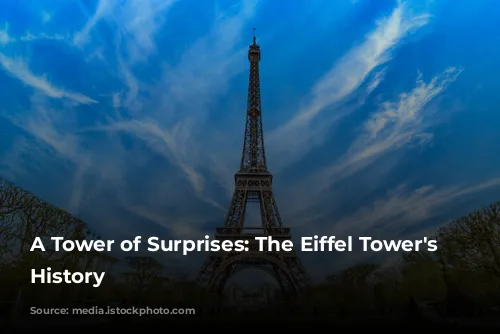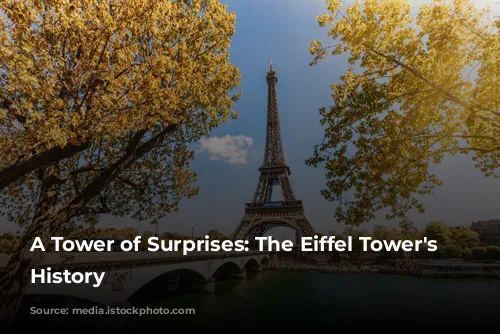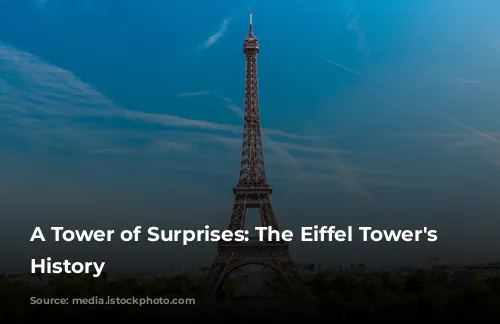The Eiffel Tower, a Parisian icon, is a symbol of romance and beauty. But did you know this architectural marvel was once a vibrant yellow? It’s true! Over the years, this “Iron Lady” has gone through a series of makeovers and color transformations. From its reddish-brown debut in 1889 to its yellow makeover a decade later, the Eiffel Tower has always been stylish. But it was only in 1968 that the tower finally adopted its current “Eiffel Tower Brown”, a specially mixed shade that reflects its French heritage. Every seven years, the tower gets a fresh coat of paint, with 60 tons of paint used to maintain its timeless glamour. To create a dramatic silhouette against the Parisian sky, the tower is painted in three shades, becoming lighter as it ascends.

A Tower of Innovation: Engineering and Legacy
The Eiffel Tower wasn’t just a fashion statement. It was also a monument to French ingenuity and a celebration of the French Revolution’s centennial. In 1889, the Exposition Universelle (World’s Fair) was seeking a spectacular centerpiece, and from 107 designs, they chose the visionary proposal by Gustave Eiffel and his team of architects and engineers. The Eiffel Tower was a triumph of engineering, standing as the tallest structure in the world for over four decades, dominating the skyline until 1930. Its imposing height was surpassed by the Chrysler Building in New York, but the Eiffel Tower reclaimed its title in 1957 by adding an antenna.
A Tower of Advertising: Reaching New Heights
Beyond its structural achievements, the Eiffel Tower also made its mark in the advertising world. From 1925 to 1936, the tower served as a giant billboard, featuring illuminated letters of the Citroen automobile company. The massive advertisement, visible for 20 miles, even guided Charles Lindbergh during his historic solo trans-Atlantic flight in 1927.
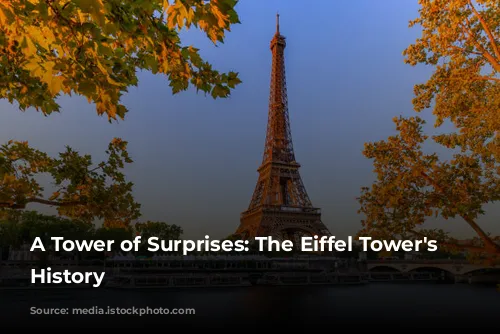
A Tower of Controversy: From Condemnation to Celebration
But not everyone was thrilled by the tower’s groundbreaking design. In 1887, 300 artists and intellectuals signed a scathing manifesto, calling the Eiffel Tower a “useless and monstrous” eyesore. They condemned the tower as a “gigantic black factory chimney,” arguing that even America, known for its commercialism, wouldn’t want it. However, the Eiffel Tower’s imposing presence and innovative spirit ultimately won over even its most ardent critics.

A Tower of Discovery: Science and Innovation
The Eiffel Tower wasn’t just a spectacle, it was also a laboratory for scientific advancement. Eiffel, a visionary engineer, used the tower as a platform for astronomy, meteorology, aerodynamics, and physiology research, even testing Foucault’s Pendulum. He installed a wind tunnel at the tower’s base for airplane and automobile testing in 1909. These pioneering experiments solidified the Eiffel Tower’s role as a hub of innovation.
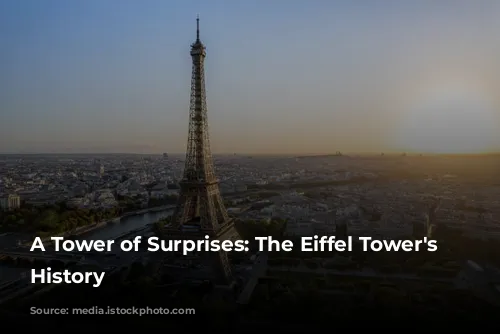
A Tower of Secrets: Espionage and World War I
The Eiffel Tower played a significant role during World War I, serving as a vital communication center for the French military. The tower’s wireless station intercepted enemy messages, providing valuable intelligence that helped turn the tide of war. This critical role even led to the capture of Mata Hari, a notorious spy, based on coded messages intercepted by the Eiffel Tower.

A Tower of Courage: Defying Gravity
The Eiffel Tower’s height and structure have attracted daredevils seeking thrilling adventures. Over the years, adventurous individuals have used the tower to attempt stunts with parachutes and bungee cords. But not all these daring feats ended well. In 1912, Franz Reichelt, a tailor, attempted to fly from the tower using a spring-loaded parachute suit but tragically crashed to the ground. A few years later, in 1926, Leon Collot, an aviator, crashed while attempting to fly his plane beneath the tower, resulting in his death.

A Tower of Enduring Legacy: A Parisian Icon
From its humble beginnings as a controversial design to its iconic status as a symbol of Paris, the Eiffel Tower has come a long way. Its remarkable history is filled with surprises, innovation, and boldness, making it much more than a mere structure. It’s a testament to human creativity and engineering prowess, forever etched in the heart of Paris.
